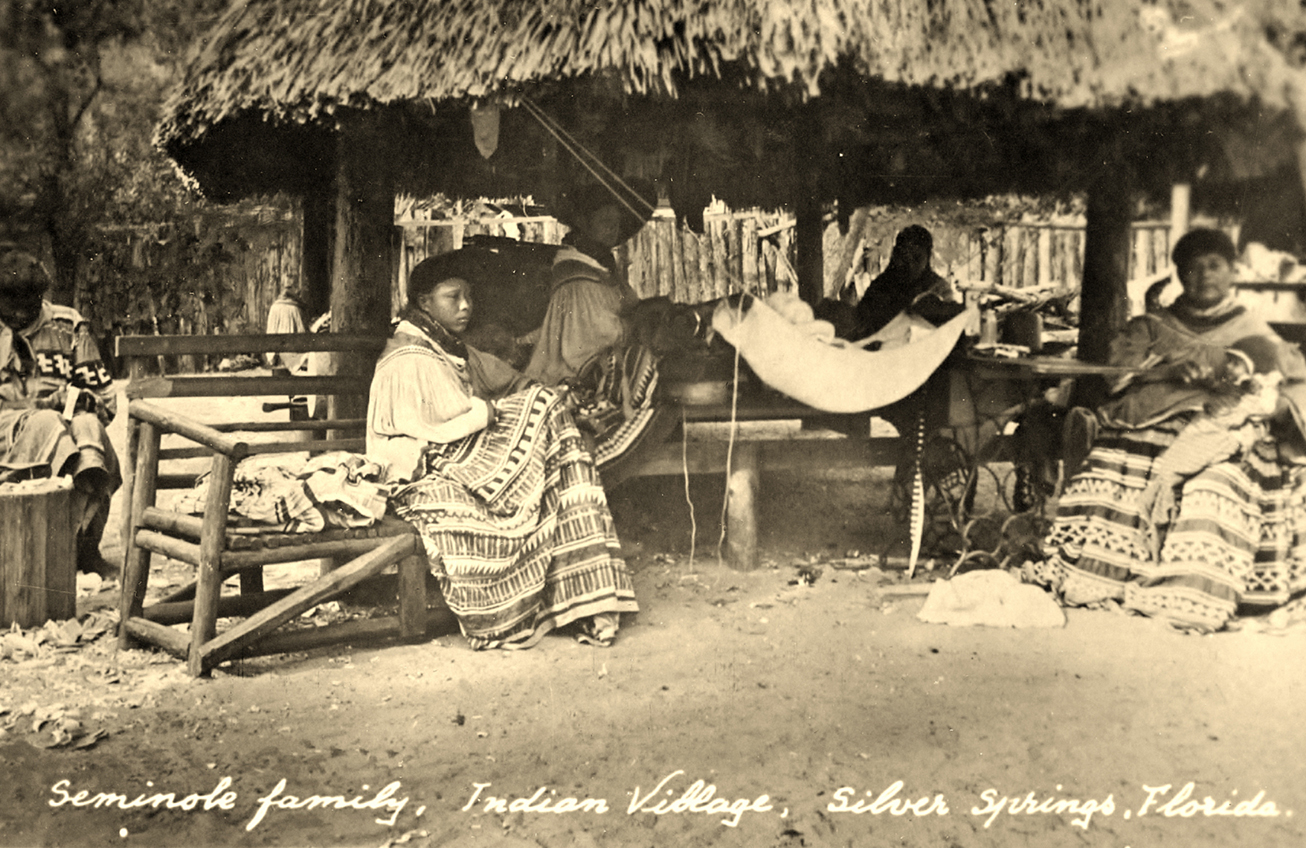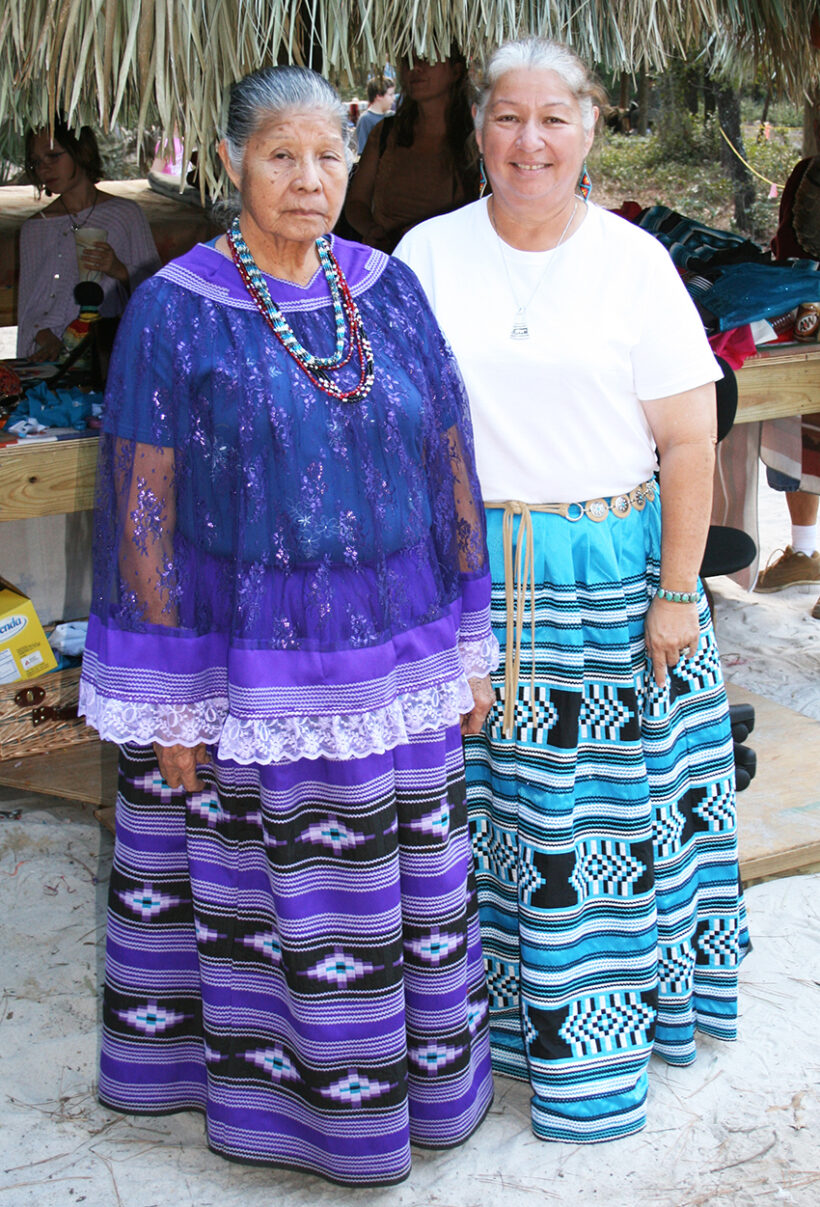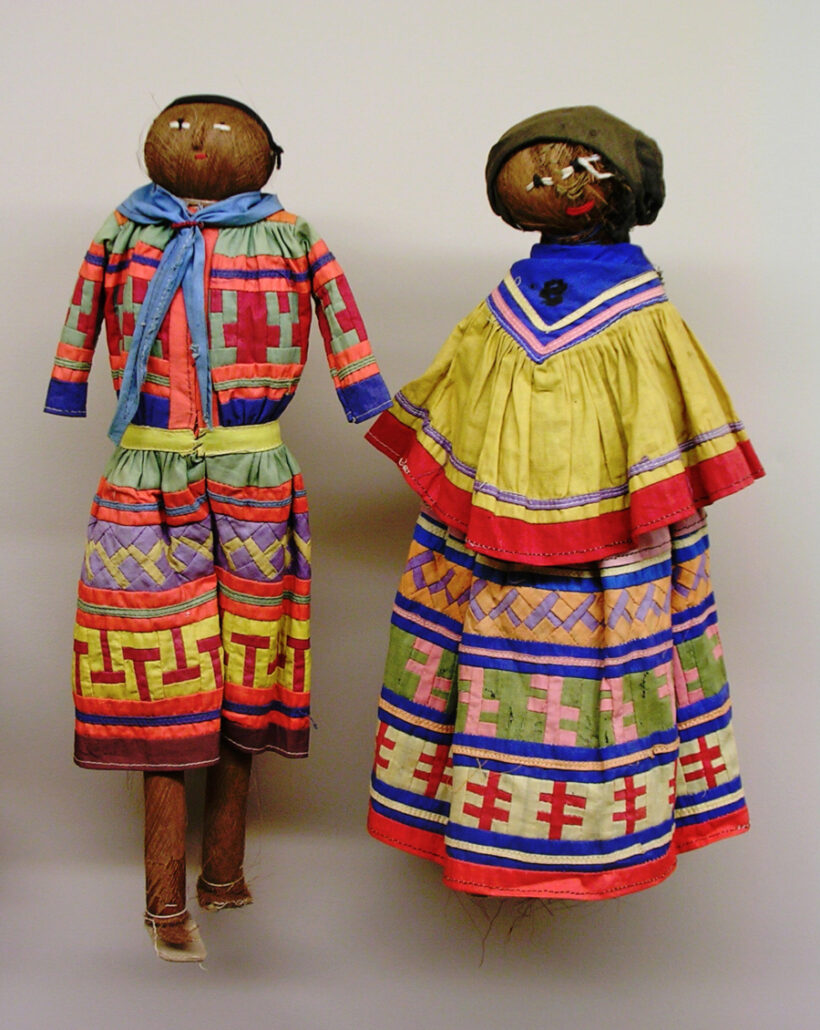
There are many things that make Florida wonderful and interesting. Among the most unique cultural aspects of the Sunshine State are the Seminole and Miccosukee tribes. The members of these two federally recognized tribes live on reservations in South Florida (as do members of the Traditional Seminole tribe, who have chosen not to be recognized by the federal government).
As part of my role as director of the Silver River Museum & Environmental Education Center, I have had the honor of meeting numerous tribal members who have ventured to Ocala to conduct educational programs. One of the most fascinating things I have learned about is a clothing style called patchwork.
 For years, these families lived in isolation deep in the South Florida wilds. They would visit trading posts to obtain necessities, then return to family camps in the Everglades to avoid contact with non-native people. As time went on and the Everglades were drained, the trading posts began to close. A new industry arose in the creation of tourist camps. Tribal family members would spend time at the camps, or even live there, in order to make a living. One such camp was at Silver Springs from the late 1920s up until the 1960s. This was one of the farthest camps to the north and was associated with the Ross Allen Reptile Institute.
For years, these families lived in isolation deep in the South Florida wilds. They would visit trading posts to obtain necessities, then return to family camps in the Everglades to avoid contact with non-native people. As time went on and the Everglades were drained, the trading posts began to close. A new industry arose in the creation of tourist camps. Tribal family members would spend time at the camps, or even live there, in order to make a living. One such camp was at Silver Springs from the late 1920s up until the 1960s. This was one of the farthest camps to the north and was associated with the Ross Allen Reptile Institute.
About the same time the camps were being established during the early 1900s, sewing machines became available and many Native women began to make a unique style of clothing called patchwork. The craft of creating patchwork had two benefits, a woman would make clothing for her family members and also make additional items to sell to tourists to generate income. Patchwork exploded as an art form during this time.
Patchwork refers to the style of clothing in which many small pieces of cloth are sewn together in bands to make intricate geometric patterns. The bands are then sewn into garments such as jackets, shirts and skirts. Patchwork is unique to Seminole and Miccosukee cultures and is considered an extremely important craft that shows pride and identity within these communities. The skill of creating patchwork has been passed down from grandmother to granddaughter for decades. The styles of the clothing and the designs of the patchwork have changed over time, much like any other fashion trend, but this art form remains an important part of Native American culture in Florida.
 Patchwork is central to cultural identity among the women who create it and the people who wear it. Earlier Native American historic clothing styles in the Southeast focused on appliqué work, where bands of cloth were sewn onto the garment. Patchwork differs in the sense that the design is sewn in as part of the garment. The Southeastern native people typically organize themselves around the woman’s side of the family, with camps and family compounds centered on a grandmother and her daughters’ families. Patchwork remains a symbol of this traditional lifestyle.
Patchwork is central to cultural identity among the women who create it and the people who wear it. Earlier Native American historic clothing styles in the Southeast focused on appliqué work, where bands of cloth were sewn onto the garment. Patchwork differs in the sense that the design is sewn in as part of the garment. The Southeastern native people typically organize themselves around the woman’s side of the family, with camps and family compounds centered on a grandmother and her daughters’ families. Patchwork remains a symbol of this traditional lifestyle.
For non-natives who are interested in patchwork, I believe the garments should be worn respectfully and with a full appreciation of its cultural importance and history and should only be purchased from Seminole or Miccosukee artists. That way, the buyer is sure they are getting an authentic product and the Native American artists retain control of the craft and benefit from their work. OS
Scott Mitchell is a field archaeologist, scientific illustrator and director of the Silver River Museum & Environmental Education Center, located at 1445 NE 58th Ave., Ocala, inside the Silver River State Park. Museum hours are 10am to 4pm Saturday and Sunday. Admission to the park is $2 per person; free ages 6 and younger. To learn more, go to silverrivermuseum.com.






